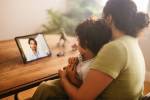Arthritis: Not just for the elderly
Even though it is commonly associated with the elderly, two-thirds of all arthritis strikes before age 65. According to the National Arthritis Foundation, most people get arthritis between the ages of 15 and 65. It has been diagnosed in patients as young as six months. The disease affects 46 million diagnosed patients in the United States.
The Centers for Disease Control and Prevention predict that the number of people suffering from one of the approximately 100 types of arthritis will be 67 million by the year 2030. According to a telephone survey conducted by researchers at Stanford University, nearly one in five of those surveyed had chronic pain similar to that caused by arthritis. Yet nearly half said they did not know the cause of the pain. Eighty-four percent were taking over-the-counter drugs for that pain.
Osteoarthritis, the most common form, already affects 21 million Americans, even though it is preventable. One of its less preventable counterparts, rheumatoid arthritis, is undoubtedly one of the most painful and disabling, but many people do not know that detecting it early may eliminate the suffering entirely. Sadly, many people do not understand arthritis at all, often attributing any joint stiffness to arthritis in general, never seeking diagnosis or proper treatment. Knowing the difference may be the first step in proving the CDC's prediction wrong.
"Both rheumatoid and osteoarthritis cause swelling and limit mobility," Chief Public Health officer for the Arthritis Foundation, Dr. Patience White, M.D., said. "The first thing to do is find out what type of arthritis you have."
The easiest way for patients to tell the difference between the two is to assess their stiffness. Both forms will have some type of morning stiffness. However, the stiffness associated with rheumatoid arthritis lasts for several hours and is improved by activity. The morning stiffness from osteoarthritis generally lasts 15 minutes and is made worse by activity throughout the day.
"Rheumatoid arthritis is actually an autoimmune disease that affects every joint," White, said. "It's highly genetically related, like type 1 diabetes and lupus. It actually acts like cancer, eating the joints and cartilage."
This form of arthritis affects more women than men, peaking in occurrence during the 30s and 60s. Rheumatoid arthritis is characterized by redness and swelling at the affected joint. It attacks the lining of the joint, a type of tissue called synovium, which produces synovial fluid. Synovial fluid is a clear substance that lubricates and nourishes the cartilage and bones. Rheumatoid arthritis is symmetrical, unlike osteoarthritis, meaning that if it affects one hand, it will affect both.
"Untreated, it's very disabling, often resulting in five to 10 years out of work," White said. "Early treatment can mean that patients won't lose their independence."
If a blood test reveals that patients have the rheumatoid arthritis factor in their blood, a rheumatologist can provide medication, explained manager of public health information at the Arthritis Foundation, Trina Alcorn. Treatment can be intense, often involving a low dose cancer treatment, called methotrexate, and expensive biologics to block inflammatory pathways and decrease deformities. As a last resort, often in patients who waited to seek treatment, joint replacement may be necessary.
"The sooner patients suffering from rheumatoid arthritis are treated, the less joint deformity they suffer and the more function they maintain," Alcorn said.
Unfortunately, treatment can cost $12,000 to $15,000 a year, White explained. For those with no insurance, the effects can be devastating. Fortunately, rheumatoid arthritis is less common than osteoarthritis.
"Although we don't know the exact cause of osteoarthritis, we know that prior injury and obesity can be contributing factors," White said. "Every pound of body weight is like four pounds across the knee in terms of wear and tear. That means that losing 10 to 15 pounds can decrease pain by 50 percent."
Twenty-one million Americans suffer from osteoarthritis. It affects the quality of cartilage in weight bearing and hand joints, decreasing the water content and making that cartilage brittle. Obesity hastens the progression of osteoarthritis.
"We're getting to the point where baby boomers are having significant problems with this type of arthritis, so the sheer numbers are increasing," said White. "Then the obesity epidemic in this country makes this disease even worse."
Treatment for osteoarthritis may simply involve weight loss and exercise, specifically because it is most commonly found in the knees and other weight bearing joints. Tylenol for pain and ibuprofen as an anti-inflammatory are the most common, affordable treatments.
"Sedentary people just don't feel good in general," Matt Rogers, director of exercise physiology at the Arthritis Research Institute of America, said. "Most of the participants that I study are age 40 and over, some in their 90s. I give them an exercise regimen specific to the group that they're in. We don't do any pharmaceutical studies."
According to Rogers, most people show signs of osteoarthritis, at least on x-ray, by age 70. He studies the effect of physical exercise on patients suffering from osteoarthritis. He encourages aerobic exercise, swimming, walking and biking. Exercise is good for symptoms, he explained. Patients who do an exercise regimen often suffer from stiffness if they stop.
"Not many people meet the CDC's requirement of 30 minutes of exercise five times a week," White said. "It doesn't even have to be consecutive and the effects can be tremendous."
Exercise is vital to arthritis patients of all ages, according to McKay.
"They've done research on patients 80 and older, and with weight lifting, stretching and increasing core body strength, lot of the patients found that their joints stopped hurting, and they could get rid of their walkers and canes," he said. "The aging process seems to be directly related to lack of physical activity."
Alcorn said that certain programs may help increase range of motion, mobility and stability while decreasing pain. White also mentioned that acupuncture may help patients suffering from osteoarthritis in the knees. White encouraged patients to visit the Arthritis Foundation's website, www.arthritis.org, for programs concerning exercise and self-management and to find their local chapter.
"We also have a self-help program where we teach people how to modify their lifestyle to adjust for arthritis," Alcorn said. "It's more of a pro-active approach to treating arthritis than taking a pill and sitting back waiting for something to happen."
While everyone should exercise regularly, those who have suffered previous injury to a joint are at a greater risk of developing osteoporosis. Generally, arthritis will become noticeable about 10 years after the injury was sustained. This means that if a patient is injured at age 12, they may be suffering from arthritis symptoms at 22.
Rheumatoid arthritis, even if treated early and sent into remission, may also cause osteoarthritis. Many people believe that chondroitin, a natural component of cartilage that is often taken as an over the counter vitamin, will prevent arthritis. Although taking the vitamin will not negatively affect cartilage, it has not been proven to be much more effective than Tylenol according to White.
"Cow cartilage, ground-up shells, copper bracelets -- I've seen a lot of things over the years, and if those worked I'd be out of business and have to find a new job," he said. He believes patients turn to food supplements because it makes them feel empowered, like they're doing something to help their health. It is vital, however, that they keep taking their prescribed medicine. White does recommend taking fish oil capsules or eating cold water fish which has been shown to reduce inflammation and cholesterol levels and thin the blood.
The outlook today is much brighter than in the past for rheumatoid arthritis sufferers, he said.
"It's the golden age of treatment for these patients. We used to say, 'we're going to try to control your pain,'" White said. "Now we say, 'we're going to put this in remission so you can play softball with your son, go hiking at the lake.'"























